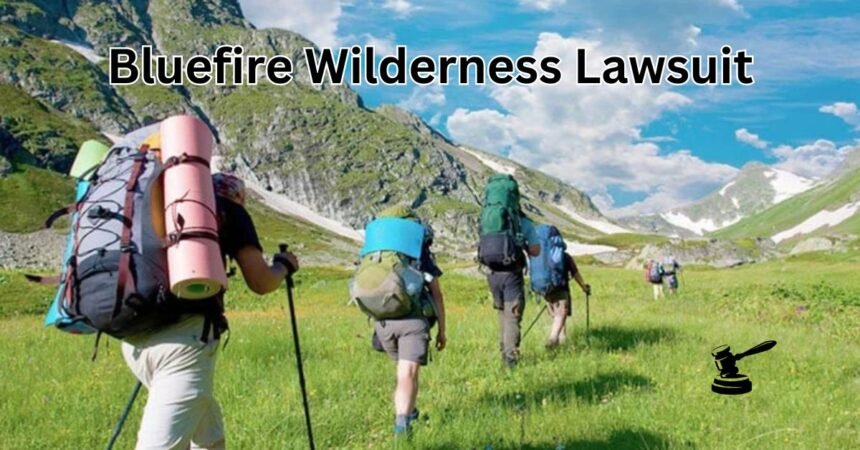Introduction
The BlueFire Wilderness lawsuit has garnered significant attention, sparking debates and raising questions within the outdoor education and wilderness therapy industries. BlueFire Wilderness Therapy, known for its structured programs aimed at helping troubled teens through nature-based experiences, has faced legal challenges that have impacted its operations and reputation. These lawsuits often highlight broader issues concerning the safety, ethics, and regulatory oversight of wilderness therapy programs.
This article delves into the intricacies of the BlueFire Wilderness lawsuit, exploring the key concepts, implications, and potential impacts on the industry. We will cover the background of BlueFire Wilderness, the nature of the lawsuits, the challenges faced by such programs, and potential solutions to improve industry standards.
Detailed Explanation of Key Concepts About BlueFire Wilderness Lawsuit
What is BlueFire Wilderness Therapy?
BlueFire Wilderness Therapy is a wilderness-based therapeutic program that uses outdoor adventures, clinical therapy, and group dynamics to help adolescents and young adults struggling with behavioral, emotional, and mental health issues. Located in Idaho, BlueFire Wilderness Therapy integrates evidence-based practices with experiential learning in a remote wilderness setting, offering a unique approach to therapy that contrasts traditional clinical settings.
Nature of the BlueFire Wilderness Lawsuit
The lawsuits involving BlueFire Wilderness generally revolve around allegations of negligence, inadequate care, and safety concerns. Plaintiffs often claim that the program failed to provide a safe environment or properly address the needs of participants. These lawsuits raise questions about the safety protocols, staff training, and overall effectiveness of wilderness therapy programs.
Key Components of the Lawsuit
- Allegations of Negligence: Lawsuits frequently claim that BlueFire Wilderness did not adequately protect participants, leading to physical or emotional harm.
- Safety and Oversight Issues: Concerns about insufficient supervision, inadequate staff training, and failure to follow safety protocols are central to many legal cases.
- Claims of Misrepresentation: Some lawsuits argue that the program misled parents or guardians about the level of care and the program’s therapeutic benefits.
- Emotional and Physical Harm: Allegations often include claims that participants suffered physical injuries or emotional distress due to the program’s activities or lack of proper therapeutic oversight.
Importance and Benefits of Understanding the BlueFire Wilderness Lawsuit
Why is the BlueFire Wilderness Lawsuit Important?
The BlueFire Wilderness lawsuit is significant because it highlights critical issues within the wilderness therapy industry, including the need for stricter regulations. Better safety protocols, and transparency in marketing and operations. Understanding these lawsuits helps parents, guardians, and professionals make informed decisions when considering wilderness therapy as an intervention for struggling teens.
Key Benefits of Awareness
- Informed Decision-Making: Awareness of the legal issues surrounding BlueFire Wilderness allows parents to better evaluate the risks and benefits of enrolling their child in a wilderness therapy program.
- Advocacy for Better Standards: Public knowledge of these lawsuits drives the push for higher standards in wilderness therapy, promoting safer and more ethical practices.
- Industry Accountability: Lawsuits play a crucial role in holding organizations accountable. Ensuring that they meet legal and ethical obligations toward their participants.
- Enhanced Regulatory Oversight: Legal challenges can lead to increased scrutiny and regulatory changes that improve the safety and quality of wilderness therapy programs.
Real-World Applications
Professionals in mental health, education, and legal fields can use insights from the BlueFire Wilderness lawsuit to advocate for changes that protect vulnerable populations. The outcomes of these lawsuits often set precedents that influence how wilderness therapy programs are regulated and operated.
Applications and Use Cases: Lessons from the BlueFire Wilderness Lawsuit
Practical Applications of Understanding the BlueFire Lawsuit
- Improved Program Evaluation: Families can use information from lawsuits to critically evaluate wilderness therapy programs. Asking essential questions about safety, staff qualifications, and program efficacy.
- Legal Guidance: Attorneys specializing in personal injury or family law can draw on these cases when advising clients on potential legal actions involving therapeutic programs.
- Policy Development: Regulators and policymakers can use lessons from the BlueFire lawsuit to draft guidelines that enhance participant safety and ensure programs meet necessary standards.
Case Studies Highlighting the Impact
- Case Study 1: A Family’s Legal Battle
One prominent case involved a family suing BlueFire Wilderness after their child suffered injuries during a program. The lawsuit alleged inadequate supervision and failure to provide proper medical care. The family’s legal team used this case to highlight the need for better staff training and emergency protocols. Influencing subsequent policy changes within the organization. - Case Study 2: Industry-Wide Implications
The ripple effect of the BlueFire lawsuit led to increased scrutiny of other wilderness therapy programs. This attention prompted many organizations to reevaluate their safety measures and marketing practices to avoid similar legal pitfalls. - Case Study 3: Regulatory Reforms
In response to lawsuits like those faced by BlueFire, some states have begun implementing stricter regulations on wilderness therapy programs. Including mandatory reporting of incidents and enhanced licensing requirements for staff.
Challenges and Solutions
Challenges Highlighted by the BlueFire Wilderness Lawsuit
- Safety Concerns: Ensuring the safety of participants in remote and often harsh environments is a significant challenge.Solution: Implement comprehensive safety training for staff, establish clear emergency protocols, and conduct regular safety audits.
- Lack of Standardized Regulations: The wilderness therapy industry lacks standardized regulations, leading to inconsistencies in care quality.Solution: Advocacy for federal or state-level regulations that enforce minimum standards for all wilderness therapy programs.
- Misleading Marketing Practices: Some programs may exaggerate their therapeutic benefits, leading to unmet expectations and legal disputes.Solution: Programs should be transparent about their methods, outcomes, and limitations, providing parents with realistic expectations.
- Emotional and Physical Risks to Participants: The inherent risks of outdoor activities combined with therapeutic interventions can lead to harm.Solution: Comprehensive risk assessments should be performed for each participant, tailoring activities to individual needs and limitations.
- Inadequate Staff Training: Unqualified or undertrained staff can exacerbate existing problems rather than provide the necessary support.Solution: Invest in rigorous training programs, certifications, and continuous professional development for all staff members.
Conclusion
The BlueFire Wilderness lawsuit serves as a critical reminder of the responsibilities held by wilderness. Therapy programs to provide safe, effective, and transparent care. As these lawsuits continue to shape the landscape of outdoor therapeutic interventions. They underscore the need for ongoing improvements in safety, staff training, and regulatory oversight.
For parents considering wilderness therapy, understanding the implications of the BlueFire Wilderness. Lawsuit can guide them in making informed choices that prioritize their child’s well-being. For industry professionals, these legal challenges offer valuable lessons on accountability, ethical standards, and the importance of maintaining public trust.








